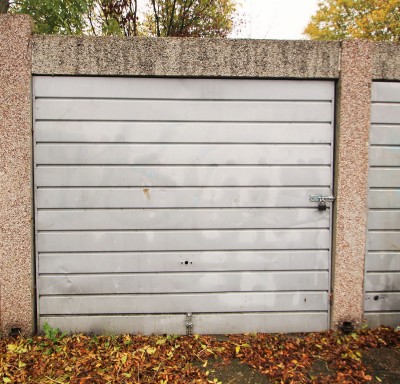You could be forgiven for thinking that buying a brand-new home means that it is flawless. However, newly-built properties are notorious for their minor defects or “snags” caused by poor workmanship or sub-par equipment.
Johnny Leadsom, Director of property funding and insurance firm, J3 Advisory, shares his insight on the snagging process, as well as a checklist of what property developers should check for before handing the keys over to buyers.
What is the snagging list timescale?
Johnny comments: “The majority of buyers will either create a snagging checklist themselves, or will employ a professional third party agency to conduct a professional snagging inspection, once the property is ready to move into, but often before the final legal completion of the sale.
“However, it is important to note that snags can be raised by property buyers, in most cases, up to a two-year period following the legal completion of the property sale.”
Is snagging covered by new build warranty cover?
Johnny says: “The new build warranty offers cover for structural defects. This means if there is a valid claim as a result of a defect that emanates from design, workmanship or materials used, the policy will respond.
“It's more common for snagging to be covered by the maintenance contract between the developer/contractor, which typically lasts for between 12 and 24 months following practical completion.
“Following the rectification of snagging issues that have been raised in the report, buyers or a third-party company will carry out a follow-up inspection to ensure that all of the snags have been rectified to a satisfactory standard.
What does a snagging list cover?
Johnny explains: “A snagging inspection will assess the quality of the property, focusing on both cosmetic and also functionality, to ensure that it is of adequate quality before the buyer moves in. Below, we’ve outlined some of the most common areas and issues of the property that are raised during the snagging process, that developers should take into account for their properties.”
1. Flooring
The quality and finish of the flooring area is often a major source of snagging issues. Common snags include uneven flooring, scratches or damage to the flooring surface, and poor-quality finishing on the skirting boards. Utilise a spirit or laser level to test that the floor is even.
2. Walls and ceilings
Poor quality decorative issues are one of the most common defects. Take the time to inspect the walls around the property, ensuring that the decorating has been completed to a high standard. Major causes of snagging issues with buyers include poor quality plastering work on the walls and ceilings, cracks, and uneven paintwork, which must be rectified.
3. Fixtures and fittings
The quality of the joinery work will be scrutinised during the snagging report. Do the doors fit their frames and open and close properly? Misaligned doors that do not function properly will lead to further damage, and often, the smoothness of how they open and close will be tested.
The quality of the joinery work will be scrutinised during the snagging report. Ensure that kitchen and bathroom fixtures are properly installed, are even, and function properly.
It’s important to check that all the cupboards and units open and close properly. The quality of sealing in the bathroom and kitchen areas must also be assessed, ensuring it is visually even, and also that it is fully functional in preventing leaks.
4. Window
How well the windows fit will also be scrutinised during the report, with professional snagging companies assessing both the fit, and whether the glass has any damage. They will also inspect whether the windows open and close properly, as well as inspect that the locks and handles are fully functional.
5. Tiling and grouting
Take the time to inspect the finer details, such as the quality of the tiling work in the bathroom and kitchen. Incomplete or poor-quality finishes can lead to snagging issues. For example, snaggers will meticulously inspect the quality of the grouting and the sealant used around the tiles. Grouting lines should be clean, even in width, and must be aligned.
As well as the finish on the tiles, they will also inspect for any marks, scratches, and other quality issues on the tiles themselves. Loose fitting or uneven tiles will be flagged as a snagging issue and can result in the tiling work needing to be redone and corrected.
6. Electrics
The functionality of the electric work around the property will be tested, even down to the small details such as the quality, fitting, and alignment of plug sockets in the property. All appliances should also be fully functional, with any faults being rectified ahead of the buyer completing on the property.
Also, check that all light fittings are fully functional, and take the time to check that there is no loose or exposed electrical wiring around the home, as this will cause a major snagging issue for safety precautions. Inspect the circuit board in the property is fully functional, by visually inspecting that no components are burnt out.
7. Utilities and water supply
Professional snagging companies will also test that all utilities and water supply in the property are fully functional and are working as expected.
Ensure that all water flow is working properly to taps, toilets, baths and showers around the home and that no leaking is occurring from the appliances. Also inspect the property for leaking pipes, by checking the walls, ceilings and flooring for wet patches or areas of dampness that could be an indicator of a leaking pipe.
8. Guttering
It isn’t just the interior of the property that will be inspected - the external guttering will be assessed on its quality, and functionality to assess whether there are any potential blockages.
Signs of faulty guttering to be vigilant for are cracks, visible leaks, sagging gutters, or a visible overflow of water, which could be an indicator of blockage. Ensure you are visually inspecting the guttering up close to spot these issues, as external issues can often be missed initially, yet can be a major source of snagging later down the line.
9. Roofing
Many professional snagging companies will also inspect the exterior and the quality of the roofing work on the property. Inspect the exterior of the roof and check for any loose or broken tiles or shingles on the exterior that will need to be replaced.
Checking the interior is also a useful indicator for issues with the quality of the roofing. If the property contains a loft space, check this area for any visible gaps or signs of airflow from the roof area. Wet patches on interior walls and ceilings are another key indicator of faults on the roof that are allowing water to enter the interior of the property.








